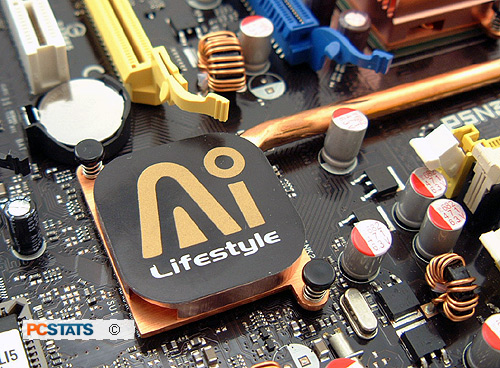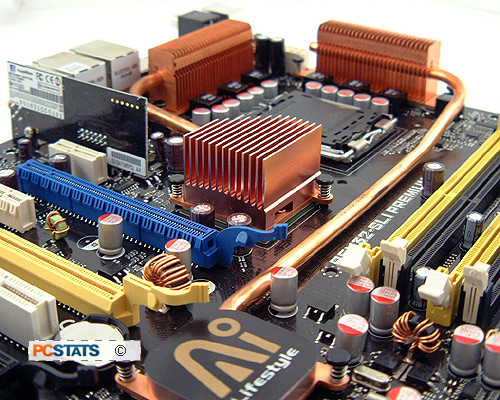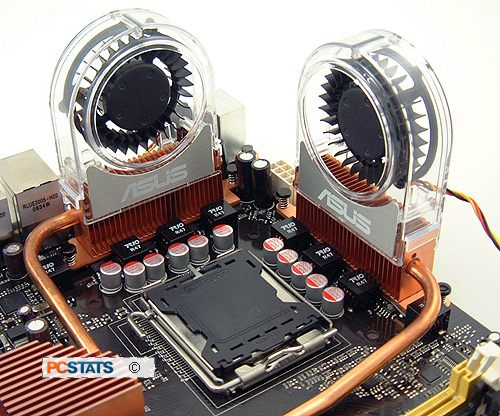The Asus
P5N32-SLI Premium motherboard has two copper heat pipes snaking between its slots and connectors, connecting low profile passive chipset
heatsinks to copper fins situated around the LGA775 CPU socket.

The nVIDIA nForce 590 SLI Intel Edition chipset generates a lot of
heat and thus requires more cooling than the regular
computer chipset. The nForce 590 SLI MCP (southbridge) has a finless copper heatsink mounted to
it, with a heatpipe that connects it to a 28 fin copper heatsink set
by the CPU socket. The nForce 590 SLI Intel Edition SPP Northbridge has
a similar cooling arrangement, although the heatsink directly on top of this
chipset is passively cools the core logic too.

In both
cases, the heat from the chipsets is conducted to a small copper fin heatsink
resting on top of the boards' MOSFETs. These two finned heatsinks work off
the exhaust airflow from the CPU fan, which blows over then just
enough to keep the thermal environment in check.

The small finned copper heatsinks on top of the MOSFETs
require active cooling if the processor is cooled with a passive heatsink, water
cooling system or phase change cooling. Asus ship two small squirrel cage fans
with the board for this very reason. The two fans are quiet,
and clip on to the heatsink fins directly (there are two power sockets on the motherboard specifically
for them). Once installed the fans are held fans and there's no chance of
them coming loose.

The nVIDIA nForce 590 SLI Intel Edition chipset gets very
hot but the Asus cooling system does a good job at dealing with the
heat. The squirrel cage fans are quiet during operation (if you decide to use them)
and would not be noticeable once the motherboard has been installed into a case. Up
next, a quick look around the Asus P5N32-SLI Premium motherboard...
